Affiliate Disclosure: We earn a commission if you purchase through one of our links at no additional cost to you.
You know outstanding travel photography when you see it. Beautiful photographs that make you want to go to there. Something colorful, something exotic, or perhaps something delicious. Yet sometimes you wonder what you should photograph when you travel. This post and podcast episode is all about helping you find the scenes and subjects that help you create your own outstanding travel photography.
You need to know what to look for, where to find it, and sometimes when to find those great subjects. Not all great photo subjects are on prime display waiting for you to get your shot. Sometimes you need to wander around and get a little lost to find what others missed. Perhaps one of the best pieces of advice we can give is to help your state of mind while you’re out exploring for photographs. You need to learn to think like a coffee table book.
Think Like a Coffee Table Book
Coffee table books, on any subject, are compelling. People know it’s a book of photos and people love photos. Why are they so popular?
It’s because coffee table books aren’t just filled with random photos. They tell a story about a subject. In your case, it’s your travel destination as seen through your eyes. These coffee table books don’t just shoot the highlights. They cover everything from big to small. The story isn’t just the major iconic photo from your site. Instead, tell a story that includes all the nuances that evoke memories or curiosity you experienced during your travel.
Visiting a major tourist destination like Rome has many famous buildings and works of art. Yet that’s only a fraction of what it’s like to travel to Rome.
Take photos of the people you meet, your meals, the roads and transportation. Talk to the locals. Observe their daily life and rituals. How do the people of Rome affect you as a visitor, even if it doesn’t seem to be a direct contact?
Maybe the traffic was crowded, or there was an interesting vehicle. Did you see someone working and take an interest in what they were doing? Maybe you stopped at a market with some interesting displays.
The way to develop outstanding travel photography isn’t to go after one or two photos of a grand subject. Instead, you want to build a story about your experience, the people who live in your destination, or perhaps something it’s known for worldwide.
In Cuba, they’re known for cigars. In New Orleans, you go for the red beans & rice, or maybe some pralines. Visit Napa Valley and follow the winemaker’s process. Go to Venice during Carnival for the masks, the fashion and the lifestyle on display.
If you had to assemble your own coffee table book – and I think you should – what photos would you take to put in it?
How to Get the Iconic Photos of Your Destination
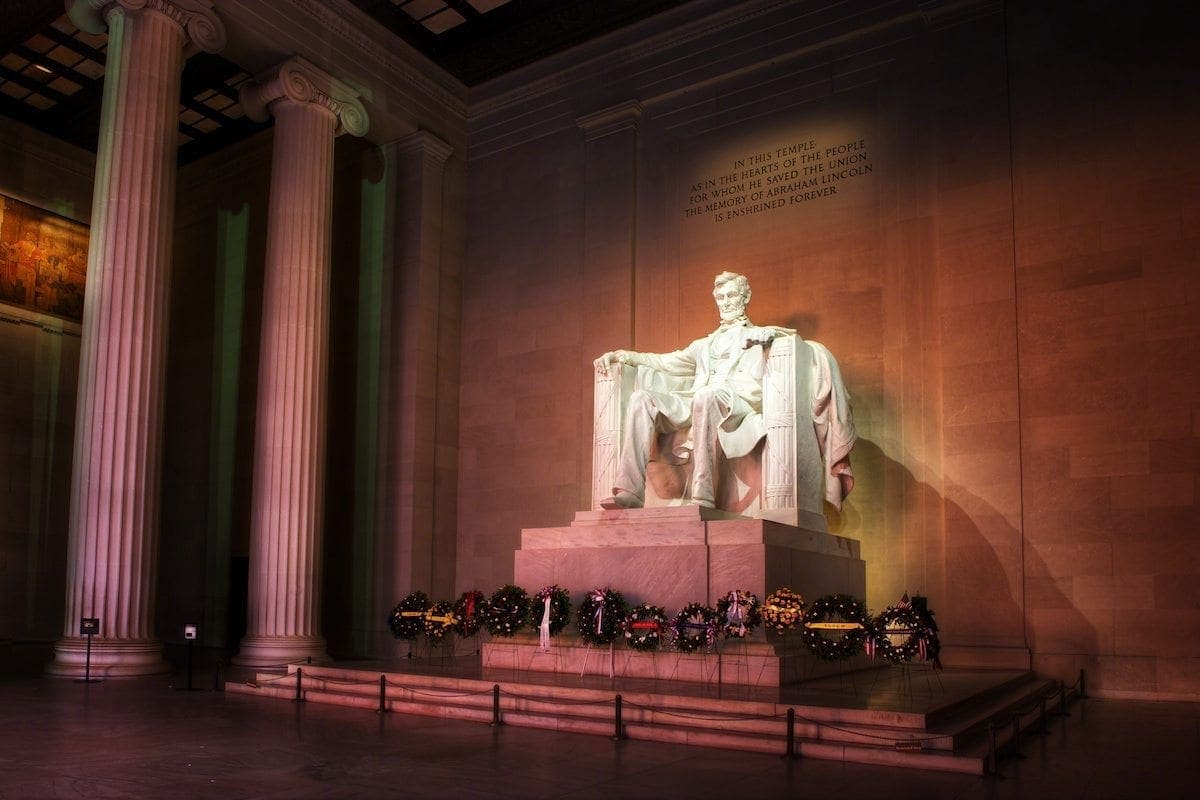
Practically every destination has some iconic feature or scene to photograph. Some have several.
I tend to refer to these as trophy shots. That’s because many travel photographers are drawn to take the same photo of the same iconic location as many photographers before them. In some cases, right beside other photographers getting pretty much the same shot at the same moment.
It’s a safe, check the box, type of shot.
There’s no shame in it, so please don’t misunderstand me when I call it a trophy shot. It’s not a derogatory remark at all. In fact, some photographers thrive at the challenge of getting a shot similar to one of their photography heroes. It’s nice to know that you have the power and skill to make a truly remarkable photo, even if you weren’t the first to publish it.
There’s More Than One Way to Photograph an Iconic Destination
Of course, you don’t have to photograph something the same way it’s always been done before. Use your own imagination and vision to come up with a different take. Visit at different times of day or not to get your icon in different light, with our without a throng of tourist.
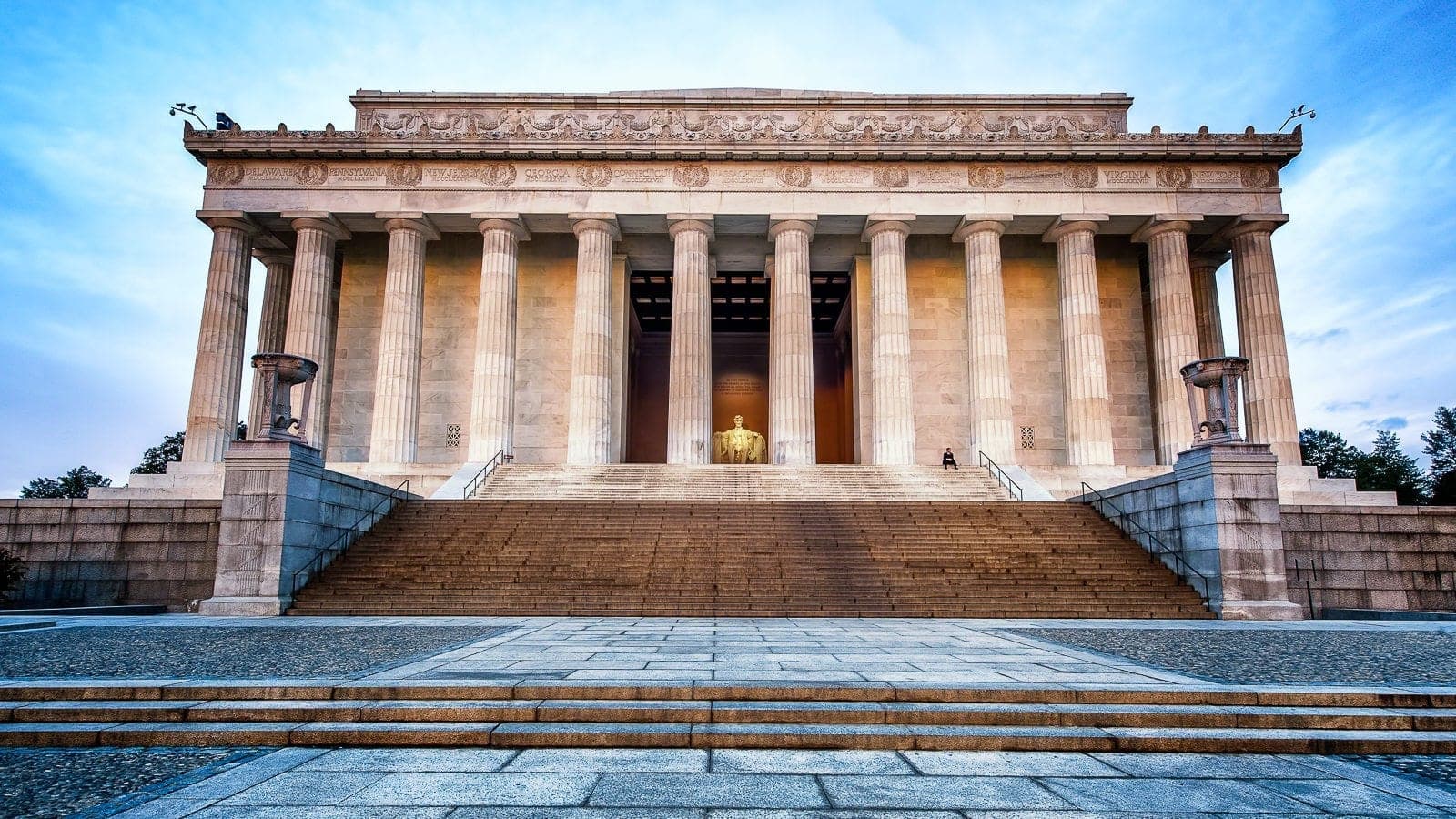
I have a number of photos of the Lincoln Memorial. An interior shot, an exterior photo, and one from the other side of the reflecting pool. Each one provides a different take on an iconic photo destination. The one above is perhaps my favorite. While you can clearly see the statue of Lincoln between the pillars, a lone man sitting on the steps provides both a sense of scale and also one of private contemplation.
Don’t just walk up, click a snapshot and then move on to the next scene. Sometimes you have to give your subject some time to let thoughts develop. Maybe you need to return a few times, or at different times to see how it looks in different light or weather.
Do Your Research
Before you head out to your travel destination, take a look at photos others have taken of the icons. Study the angles, the time of day, and surrounding elements.
Have you ever noticed that some travel photos always seem to have the same composition as every other one? That’s a good sign that there’s only one place to really get a shot – unless you can use a drone or helicopter to get your camera in a different spot.
Whether it’s The Watchman in Zion National Park, Mesa Arch or the Pyramids of Giza, some places just seem to have the same composition every time you see them. In Zion, you’re standing on a bridge facing The Watchman. When you visit the Pyramids, you go through a visitor complex and come out the other side by the Sphinx. There’s opportunity to photograph from various perspectives, but a lot of people just get their photos from the parking lot.
Outstanding travel photography often takes time.
That time could be spent on site figuring out what works and what doesn’t. You could also spend that time doing research, looking at maps or Google Earth to scout your locations in advance.
I like to find people who have been to the destination before and ask them about their experiences. Not only about best times to go, but also what they wish they would’ve done had they known more in advance of visiting their icon.
Some locations look like the travel photos you expect only at certain times of the year.
Do you remember those wavy, green hills in the standard desktop wallpaper in Windows 95? During most of the year, that place is a brown and muddy mess. It’s only during the Spring that it looks as idyllic and peaceful as it does in that photo. The photographer who captured that shot and sold it to Microsoft lived nearby and new the right time to visit for his photographs.
If you want photos of Carnival in Venice, you don’t go after Easter. Timing matters.
With that in mind, try to plan in advance when visiting your iconic locations. If you want to make sure you get them, then perhaps schedule those photos early in you trip. Get them in the bank and then go wander about for other potential gems.
Don’t Get Too Close
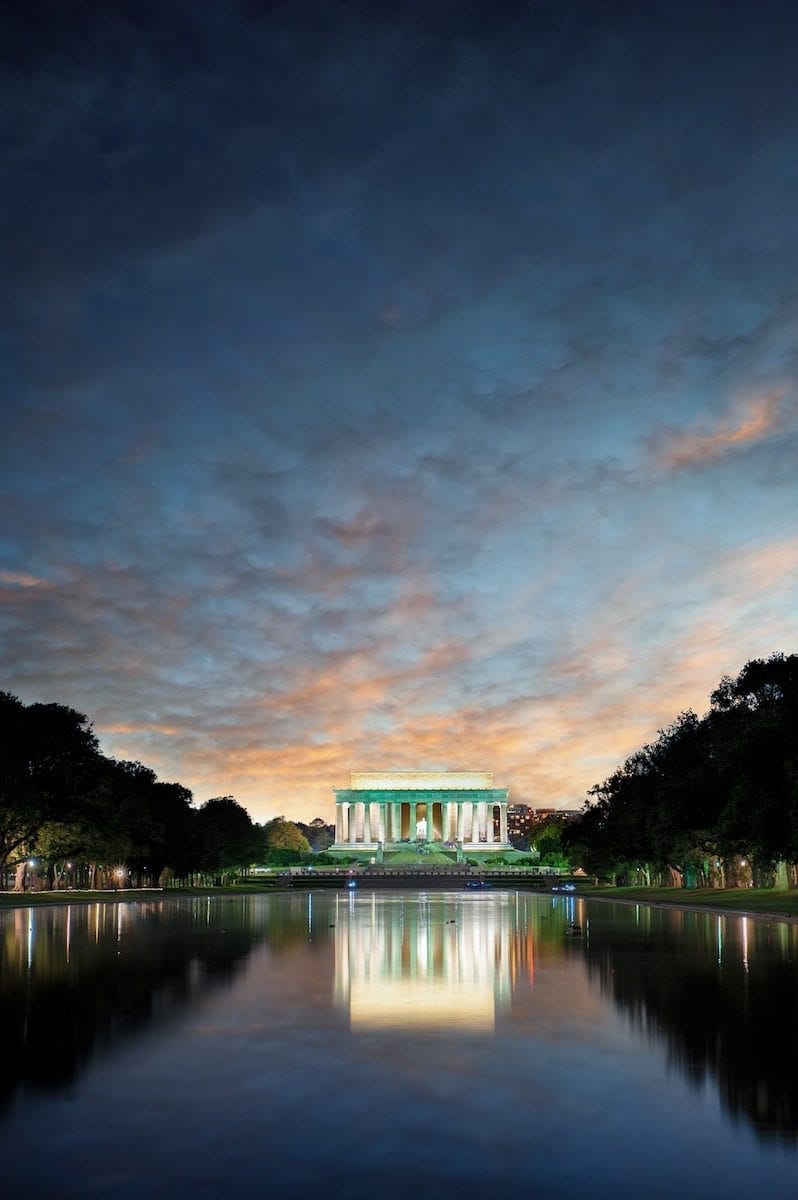
Sometimes you can get so close that you miss part of the story. Don’t be afraid to show the environment around your subject. This notion comes back to the idea mentioned in the “Think Like a Coffee Table Book.” Photograph your destination and your subject with the same idea in mind. Get some detail shots. Get some environmental shots. Show how the subject relates to the people nearby.
Each photo contributes to a greater story, yet has its own short story to itself.
Know When to Wander…and When to Play it Safe
If you want to know the hidden secrets of your travel destination, you have to go out and find them.
Unlike the icons, these are shots you don’t even know exist. You must step out of the normal tourist paths and wander around a bit. Otherwise, you’ll just come home with the photos that everyone else takes. If you want to provide some insight to others about your destination, go off the beaten path.
That doesn’t mean you should wander blindly into unsavory locations. Trust your gut. If you think you’re getting out of your element, then it’s time to turn around. However, the time of day may have a lot to do with how you perceive a neighborhood.
My best friend was a Deputy Sheriff for many years. He told me more than once that some neighborhoods were perfectly safe at night, but you wouldn’t want to venture there at night. It was almost like a change of shift among the characters you meet in the same place.
That said, it’s generally OK to wander around and get lost. Being lost isn’t the same as being in danger. It’s a way to discover your destination through personal experience. It’s how you find those little gems that tell a story that wasn’t in the glossy travel brochure.

No matter where you go, life as usual goes on for the people who live there. People go to work. Children go to school. There are times for meals, and times to relax. There are moments of stress. All of these are part of the story of your destination.
Sometimes you just need to find an interesting location and wait for people to come. It’s as the old saying goes, “Find the stage and the actors will come.”
Seriously, there’s hardly any place to be alone these days. I can head out into the Gulf of Mexico, far beyond sight of land, and someone will still come along. Don’t worry that your stage will remain empty. It won’t. Just worry about the light.
Discover the Life of the Locals

I think the best part of travel photography is getting in touch with the people who live there. Find out how they live and what drives their emotions. The woman above lives in a simple home, but you can tell that everything in her kitchen is organized and in its place.
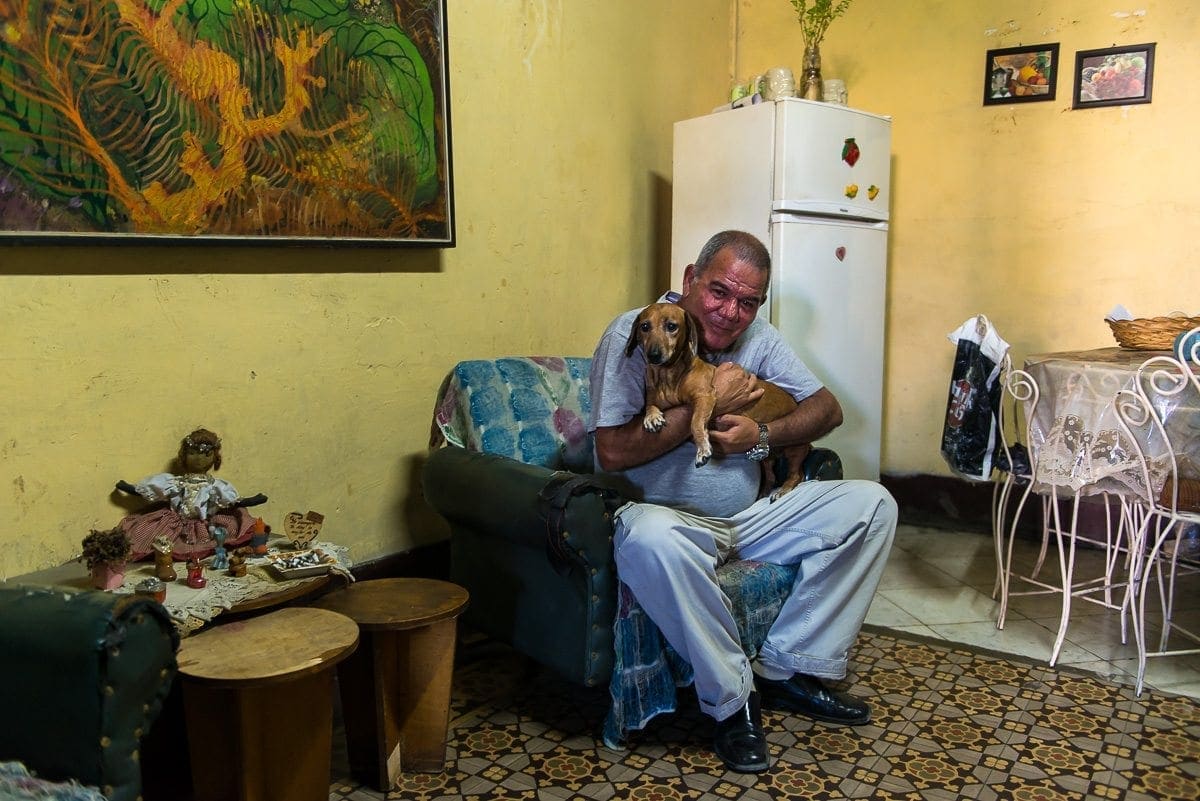
Her husband holds their pet dog, which clearly brings him joy.
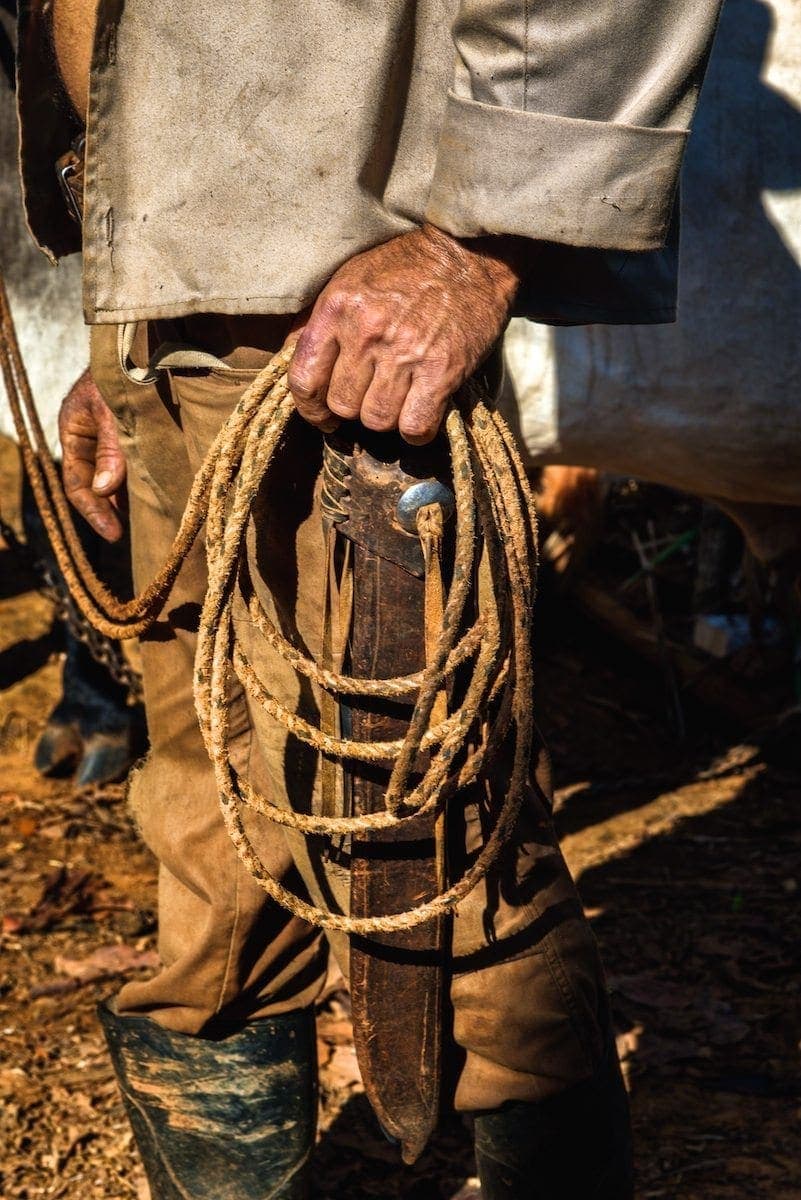
Find out what people wear, or what tools they use to do their job. Show people’s hands as they work or do something important to them. The rugged character of this man’s hands, tools and clothing tells you a lot about his life – without ever seeing his face.
Outstanding Travel Photography Takes Planning, Patience and Discovery
Notice that I didn’t mention exposure, apertures focal lengths, or technical issues. For that, check out Scott Kelby’s book – The Digital Photography Book (2020).
Travel photography isn’t about technical skill. It’s about seeing what’s possible and planning time to allow good things to happen. If you can take a correct exposure, then you have all the technical skill you need.
Travel photography is about storytelling. Let yourself soak in the ambience of your destination and feel something. In the end, that’s what outstanding travel photography is all about.
It’s a way to evoke an emotional response from the people who see your photos.
Want to learn more about Travel Photography? Click below to check out more Travel Photography articles.
Travel Photography Articles














